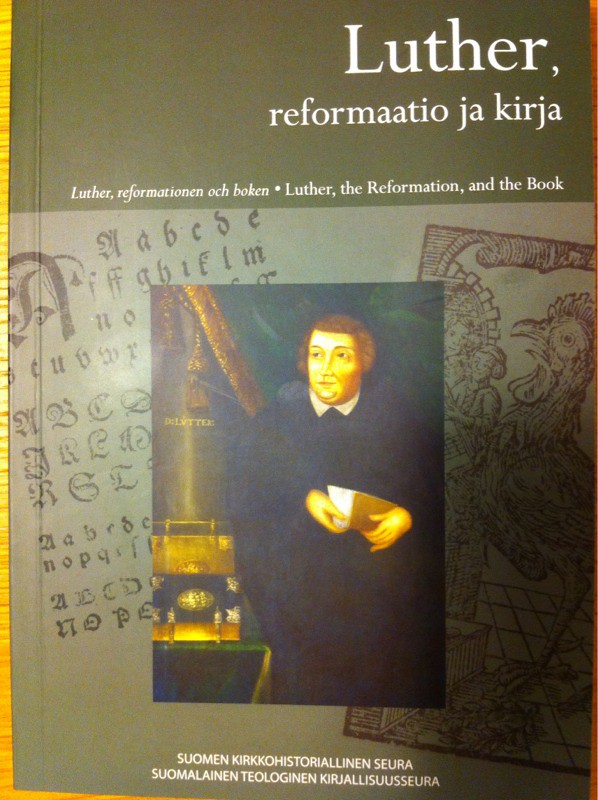
Because the 12th International Congress for Luther Research meets in Helsinki 5 - 10 August 2012 with the theme "Luther As Teacher and Reformer Of The University," the National Library of Finland held and exhibit and issued a book with the theme Luther, the Reformation, and the Book. The book which was given to every participant at the International Congress for Luther Research deals with the coming of the Reformation to Finland. Since many readers of this blog are not familiar with the story of Lutheranism in Finland, it might be good to highlight and excerpt portions of this book.

At the time of the Reformation, Finland was part of the Swedish Empire under the rule of King Gustav Vasa. (His kingdom is represented by the dark green in the map above.) Under King Vasa, the church became a "royal" institution. King Vasa was sympathetic to Lutheranism, if not by conviction then for political reasons. During the reign of King Vasa, the Lutheran Reform of the church focused on translating the Scripture and Worship into the vernacular language. By 1526, the New Testament had been translated into Swedish, with the entire Bible completed by 1541.
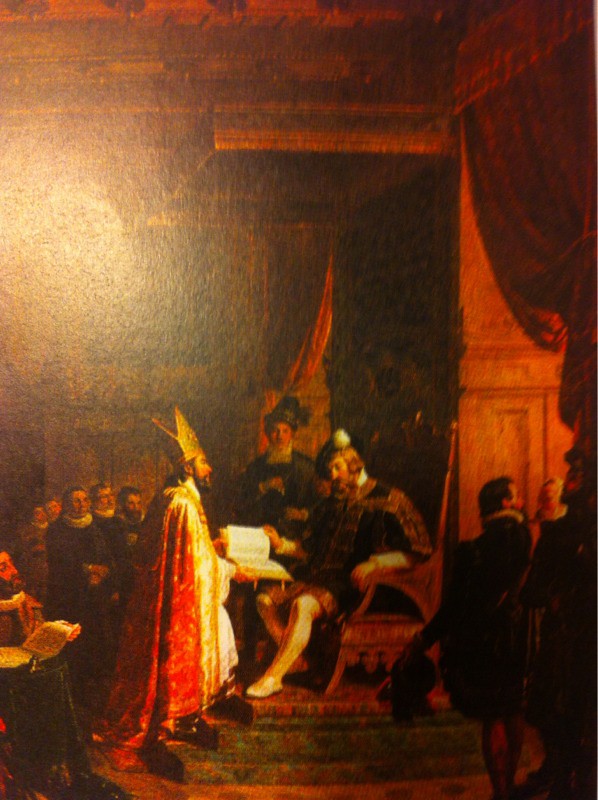
Mikael Agricola Presents The New Testament to King Gustav.
Seven years after the entire Bible had been translated into Swedish, Mikael Agricola (1507-1557), a graduate of Wittenberg University and a student of Martin Luther, presented King Gustav with a translation of the New Testament into Finnish. Although approximately 30% of the people in the Swedish Empire spoke Finnish, until Mikael Agricola translated the New Testament into Finnish, no literature existed in Finnish. Mikael Agricola is considered the "Father of the Finnish language."
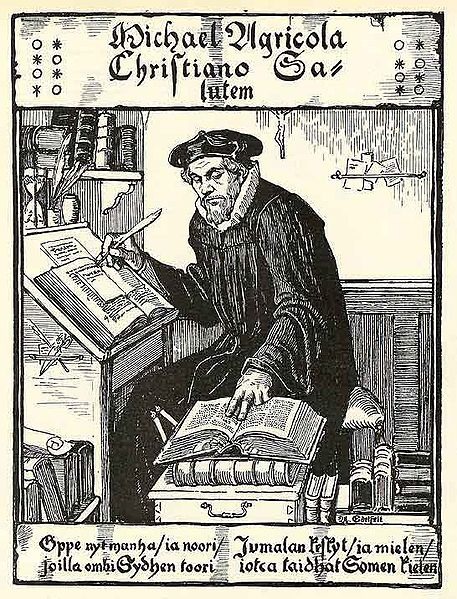
Mikael Agricola is pictured above translating the Bible into Finnish.
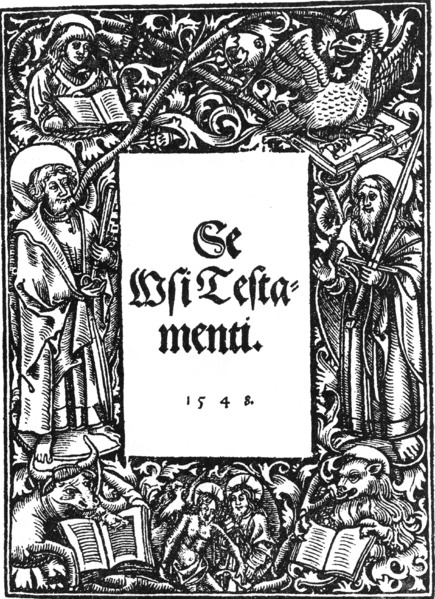
The cover from Mikael Agricola's New Testament from 1548. Mikael Agricola started to translate the New Testament in 1537. It took him eleven years to complete the New Testament in Finnish. The entire Bible would not appear in Finnish until 1642, more than a century after Mikael Agricola began his translation of the New Testament.

A page from Agricola's 1549 Lutheran Service.
Christianity came to Finland around the eleventh century. At the beginning of the 16th century, approximately 300,000 people lived in Finland. The Finnish language is not an Indo-European language, and is surprisingly related to Hungarian. Around 1300 Finnish students and priests were trained in Paris. Mikael Agricola arrived in Wittenberg in 1536. Agricola produced several other works such as a Finnish grammar, a prayer book, and portions of the liturgy. The sum total of Finnish language literature during the Reformation came from Mikael Agricola. The Reformation in Finland was slow and steady in coming. Agricola's son, Christian, became the Lutheran Bishop of Tallinn, Estonia, in 1584.
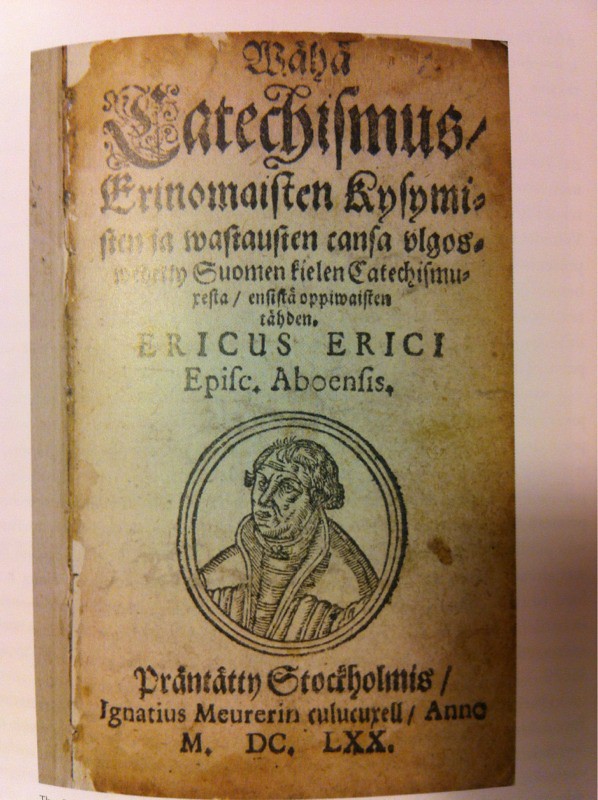
The Small Catechism and Large Catechism was translated and published in Finnish by Bishop Ericus Erici Sorolainen (1546-1625) in 1614.

Finland was annexed into the Russian Empire in 1809. Czar Alexander I allowed Finland to remain Lutheran. In 1817 for the 300th anniversary of the Reformation, the corner stone for the Lutheran Cathedral in Helsinki was laid. The building of the Lutheran Cathedral was financed by Czar Nicholas I. Until 1959, the Lutheran Cathedral in Helsinki was known as the Church of St. Nicholas.

The Helsinki Cathedral, formerly known as the Church of St. Nicholas.
In summary, Lutheranism arrived in Finland during Luther's lifetime in the 16th century. The Reformation brought with it literacy for Finland, and emphasized justification by faith, and sola scriptura. The International Congress for Luther Study in Helsinki, Finland, provides an opportunity to remember how the Reformation came to Finland, and to call for a renewal of Reformation and Scriptural teaching.
- Posted by Rev. Dr. Albert Collver, LCMS Director of Church Relations on 9 August 2012 from Helsinki, Finland.
- Posted using BlogPress from my iPad
Location:Kluuvikatu,,Finland
I Love Your Blog.....
ReplyDeletewatch Geo tv Episode video
watch Hum tv Episode video
Download Price bound list
watch Ary Digital Tv
watch Star plus tv
watch Sony tv Episode video
watch Zee tv Epidoe video